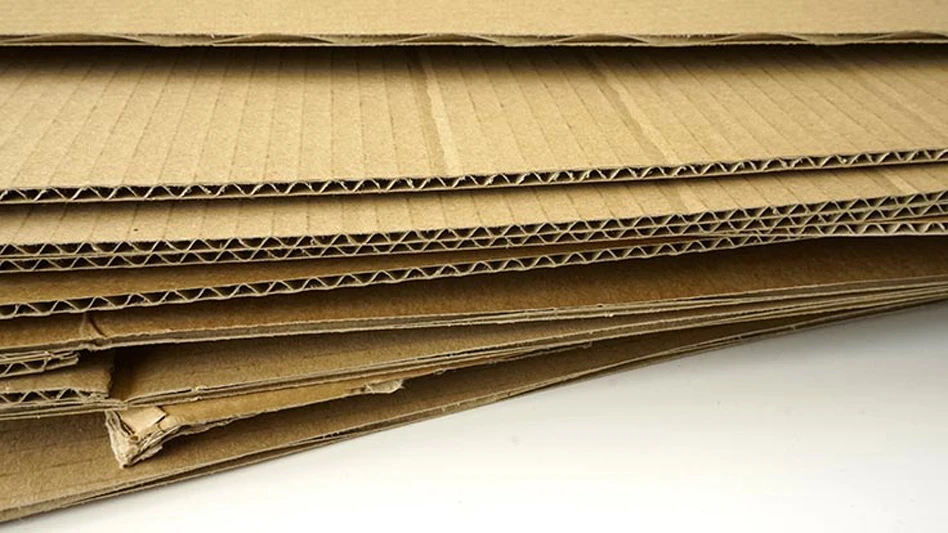
©fotosen55 | stock.adobe.com
The paper industry continued to recover from the effects of the catastrophic hurricanes that hit the southeastern U.S. in October, affecting the flow of paper in the third quarter and the outlook for the rest of the year.
In a quarterly report from Bloomberg Intelligence in mid-October, “Corrugated Packaging: 3Q/4Q Market and Demand Update,” Ryan Fox, corrugated market analyst, and Doug Larsen, paper packaging pricing analyst, examined the supply and demand dynamics of the containerboard market as the industry looks to work around the destroyed infrastructure.
Fox said Hurricane Helene and Hurricane Milton, storms that ravaged the southeastern U.S. in late September and mid-October, are inhibiting the supply of paper. The Southeast has 30-plus mills, Fox said, and up to 60 percent of those facilities rely on the rail system to transport their rolls, while the rest typically use trucks.
“While we haven’t heard of any mills that have sustained any damage directly, the infrastructure surrounding them is what’s been impacted,” he said. “Any of the infrastructure around western North Carolina, eastern Tennessee, northern Georgia, we expect there to be delays, and there are going to be workarounds as people try to get material from those mills in the Southeast to where it needs to go.”
However, Fox said this could create opportunities in the export market.
“We’ve seen exports decline, at least in September—they were almost a third of what they were earlier in the year as people were gearing up for the fact that there was going to be a strike [at the ports] and it would impede the flow of exported paper,” he said. “So, there’s probably a little bit of paper floating around in inventory that could be rerouted.”
He also noted that normal lead times are still around four to six weeks, with a few of his contacts saying it’s taking a little longer than it used to, but that “it hasn’t been too bad.”
Corrugated medium is in short supply, Fox said, noting that he hears “pretty often” from industry participants that supply is tight.
“And, unfortunately, there were several medium mills in the Southeast that will be affected with the logistics and getting that product out, so we do think that’s going to put some pressure on producers as they manage their inventory,” he continued.
One of the grades imported the most into the U.S. is white linerboard. Regarding the International Longshoremen’s Association’s strike at East and Gulf coast ports in the U.S., which ended Oct. 3, Fox said “they didn’t miss too many beats” as most every port impacted was back up and running within a few weeks.
“Even though the strike happened for three or four days, they’re already starting to get back on track to get things in and out pretty quickly,” he said.
From an overall supply standpoint, Fox expected some “hints of tightness” throughout October as the industry figures out how to get paper from mills to box plants.
On the containerboard demand side, Larsen said one of the success stories this year has been exports.
“Exports during this year have been up year over year, and that has helped increase the mill operating rate with box shipments [in the U.S.] still being flat,” he said.
Larsen said the most common way he hears box demand described recently is “OK, but not great.”
He said the best-case scenario in terms of box shipments in 2024 is a 1 percent improvement year over year. Bloomberg still stands by that projection, however, box shipments in the third quarter would have to grow 1.4 percent year over year and 0.6 percent sequentially just to reach the third-quarter average since 1994.
“For perspective, a 1.4 percent bump would mark the biggest year-over-year quarterly gain since the second quarter of 2021,” Larsen said.
But for the fourth quarter, he said industry contacts are indicating demand sentiment is stronger and there could be as much as a 2.2 percent growth year over year, but several headwinds, including both Christmas and New Year’s falling midweek, make that challenging.
“If you just look at history, the fourth quarter is rarely higher than the third quarter,” Larsen said
Latest from Recycling Today
- BMW Group, Encory launch 'direct recycling’ of batteries
- Loom Carbon, RTI International partner to scale textile recycling technology
- Goodwill Industries of West Michigan, American Glass Mosaics partner to divert glass from landfill
- CARI forms federal advocacy partnership
- Monthly packaging papers shipments down in November
- STEEL Act aims to enhance trade enforcement to prevent dumping of steel in the US
- San Francisco schools introduce compostable lunch trays
- Aduro graduates from Shell GameChanger program





